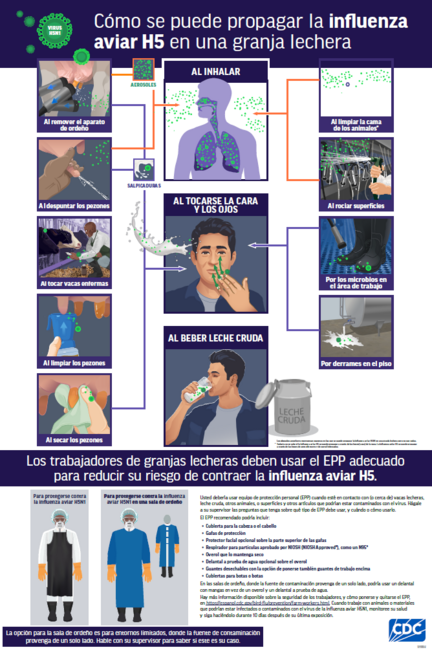There are currently no reported or confirmed human cases of highly pathogenic avian influenza A(H5N1) in Vermont.
For bulk milk testing and dairy cow/animal health information, visit the Vermont Agency of Agriculture, Food & Markets.
Avian influenza A viruses—also called “bird flu”—usually spread between birds and other animals they encounter. It is rare for bird flu to spread to humans.
Currently, the bird flu virus spreading in the United States and globally is highly pathogenic avian influenza (HPAI) A(H5N1)—referred to below as "H5N1 bird flu." The current risk to public health is low.
- H5N1 bird flu is mainly affecting animal health.
- There is no known human-to-human spread.
- The Centers for Disease Control and Prevention (CDC) and state and local health departments are monitoring the situation.
- The Vermont Department of Health is prepared to respond if there are human exposures to H5N1 bird flu in Vermont or if the risk to public health increases.

